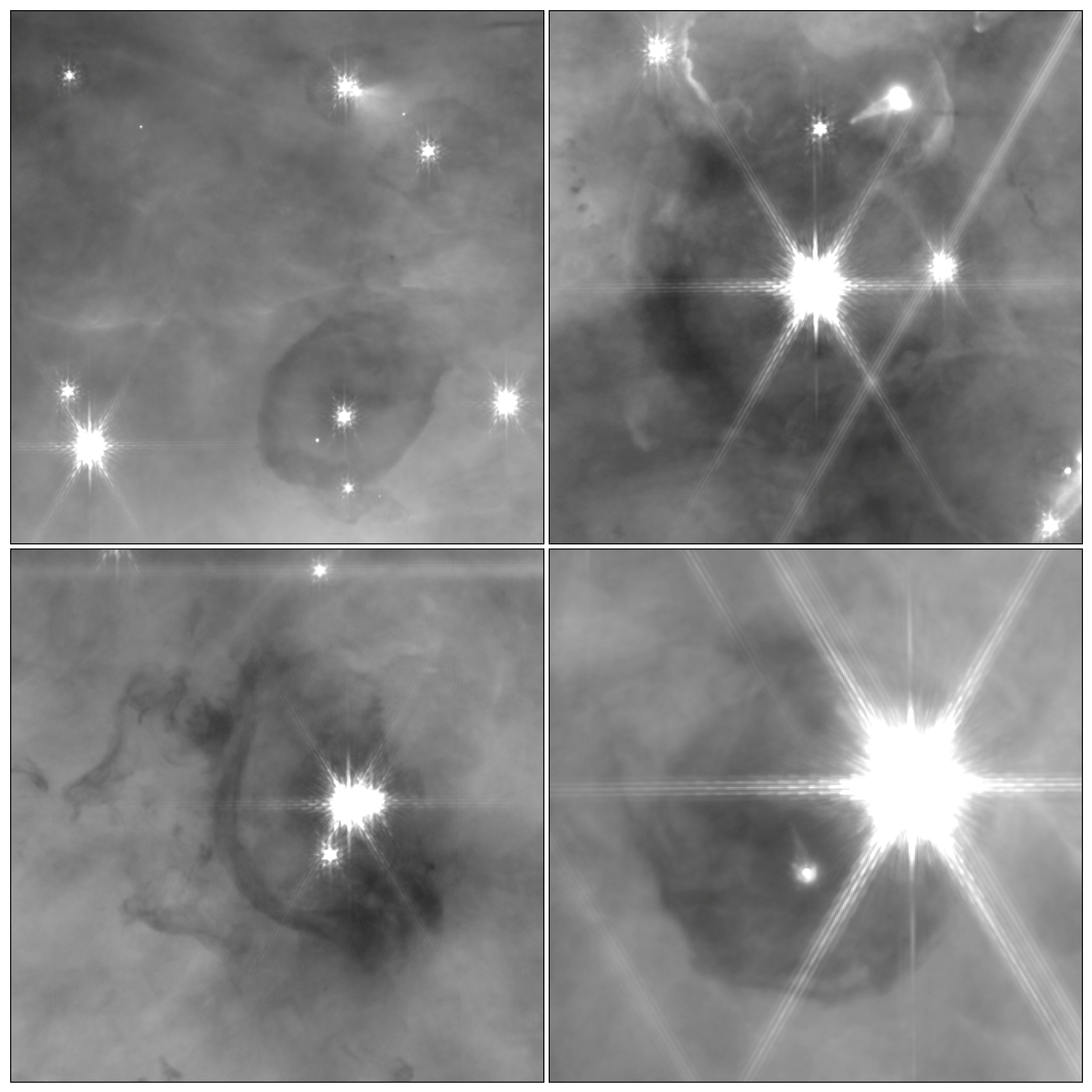The Orion Nebula is one of the brightest nebula visible to the naked eye and the closest star formation region to Earth. Observations with JWST have brought forth stunning pictures and incredible discoveries such as the presence of Jupiter-Mass Binary Objects that challenge the current theories of how planets and stars form. But something even more mysterious lurks there.
The incredible observations of the Orion Nebula are a mosaic of thousands of images and multiple filters. Researchers putting them together noticed something weird in one of the filters (F115W) that observed the universe through light with wavelengths around 1.16 microns. In certain observations from that filter, peculiar shadows would appear. No equivalent feature was seen with other instruments, puzzling the researchers, whose paper on the findings is yet to be peer-reviewed.
“Coffee stains” dark shadows seen in the Orion Nebula.
Image Credit: NASA, ESA, CSA / Science leads and image processing: M. McCaughrean, S. Pearson
“When I was looking around, I started seeing all these dark shadows around things. And that’s in the figures later on. And it’s only in that filter, exclusively in that filter. Those shadows don’t exist in any other wavelength with Hubble or with JWST,” Dr Mark McCaughrean, Senior Advisor for Science & Exploration at the European Space Agency, told IFLScience.
The first thing the researchers considered was dust. After all, infrared telescopes are particularly good at studying the dusty components of nebulae and galaxies. But this did not make any sense with the shadow disappearing in other filters. So they considered something that could be found in abundance in a nebula but only be visible in a narrow window in the electromagnetic spectrum. And the most likely substance was helium.
More dark features including bat-like ones!
Image Credit: NASA, ESA, CSA / Science leads and image processing: M. McCaughrean, S. Pearson
Helium is the second most abundant element in the universe, making up for about one-quarter of all the ordinary matter in the universe. And in particular, this would be helium with its two electrons still around, neutral helium.
“We think that it’s actually cold neutral helium absorbing the light from the background nebula. And perhaps the most remarkable one, we actually see protostellar jets in absorption against the background,” Dr McCaughrean told IFLScience.
The dark outflows that might surround protostellar jets like sheats.
Image Credit: NASA, ESA, CSA / Science leads and image processing: M. McCaughrean, S. Pearson
JWST has seen its fair share of protostellar jets. Images shared with the public show the incredible interactions between these jets and other cosmic materials. The violent interactions produce light, allowing telescopes to see them. But there is more to them than what we can see in those specific cases, so these observations open up a whole new avenue to study them.
“My friends who work in that area think that’s way more exciting than the JuMBOs because if that is a neutral absorber in those outflows, it will essentially let us measure their mass directly for the first time,” Dr McCaughrean told IFLScience.
A detailed analysis of the JWST observations of the Orion Nebula including these mysterious dark absorbers can be read here. It has been submitted to the journal Astronomy & Astrophysics.
Source Link: Mysterious Dark Shadows Observed Across Orion Nebula
